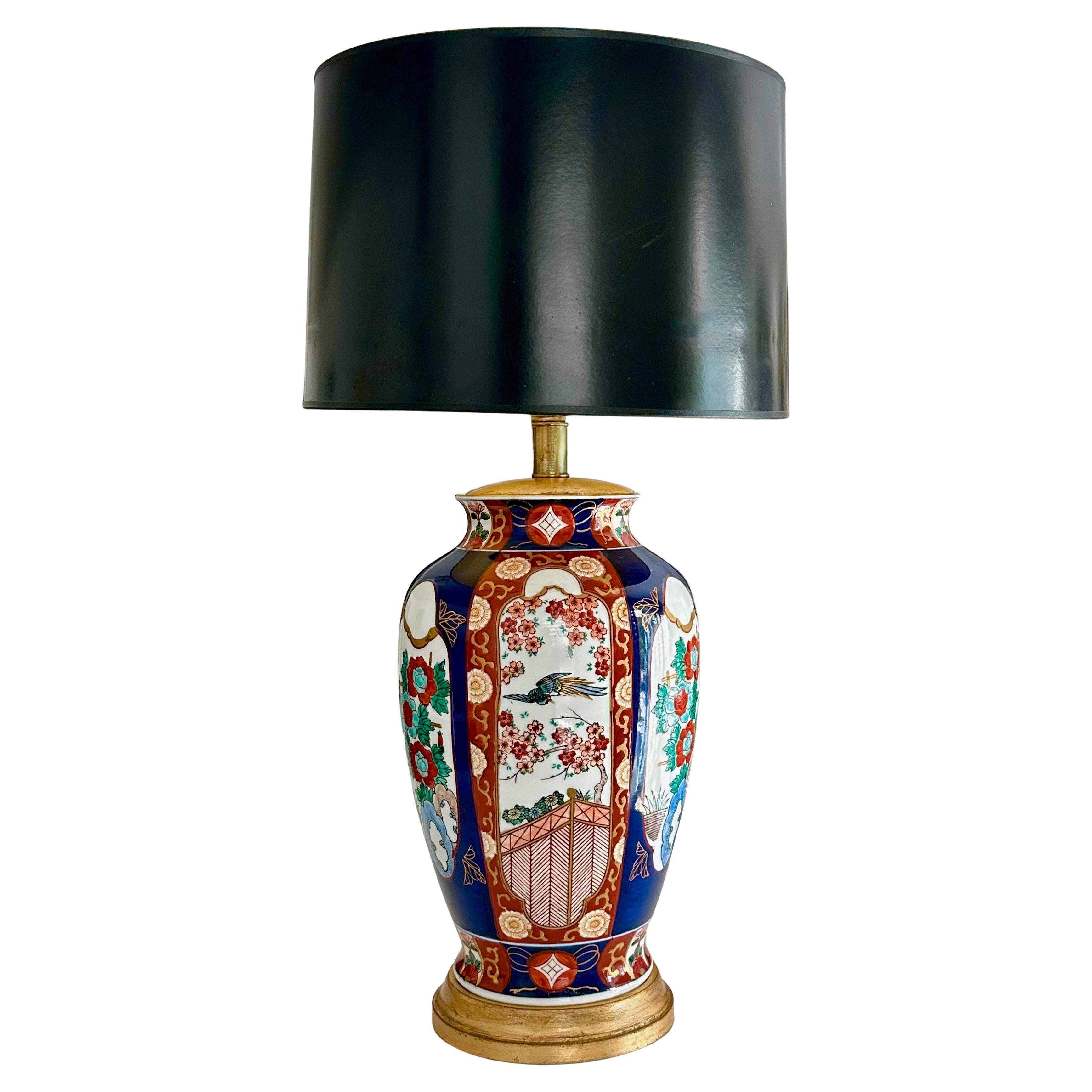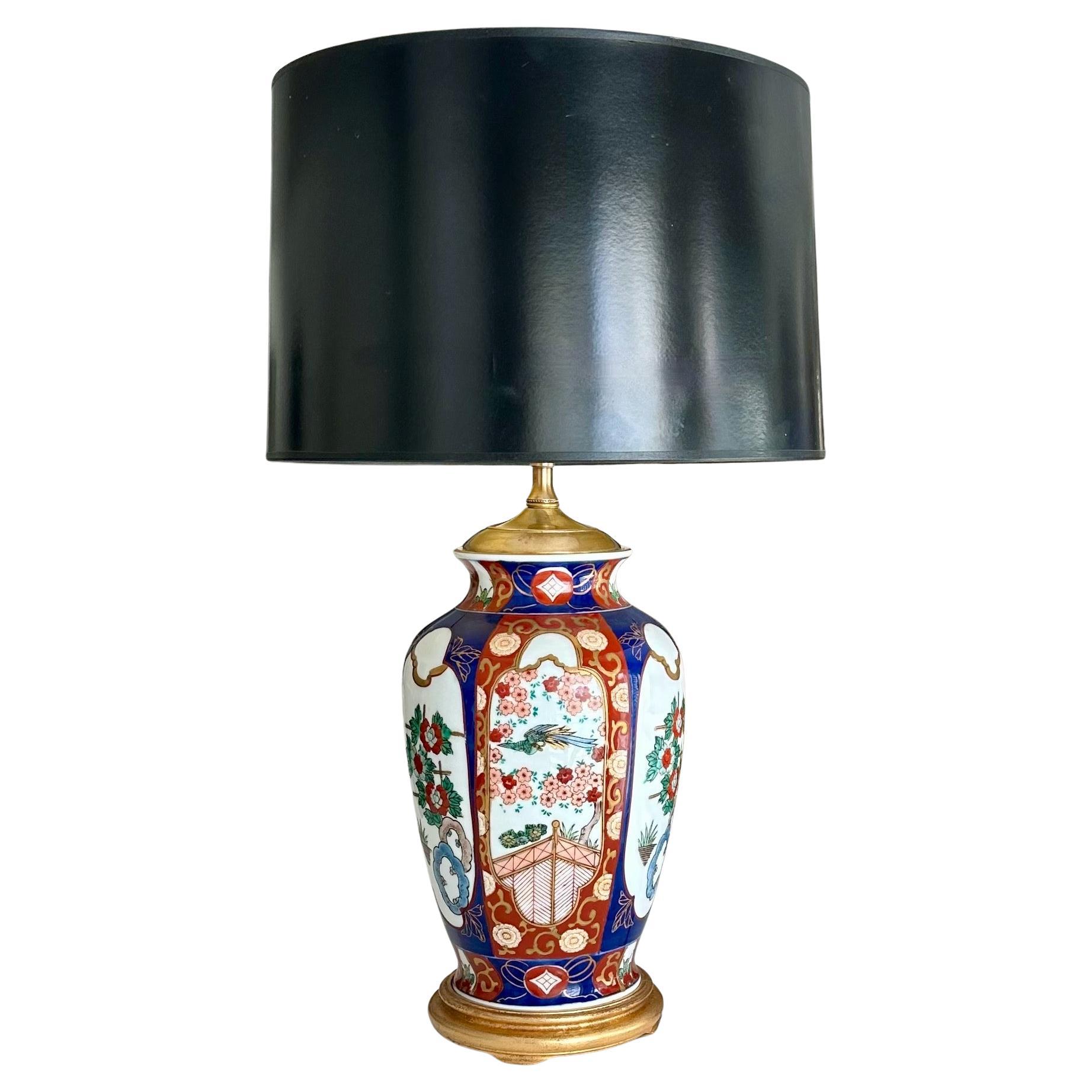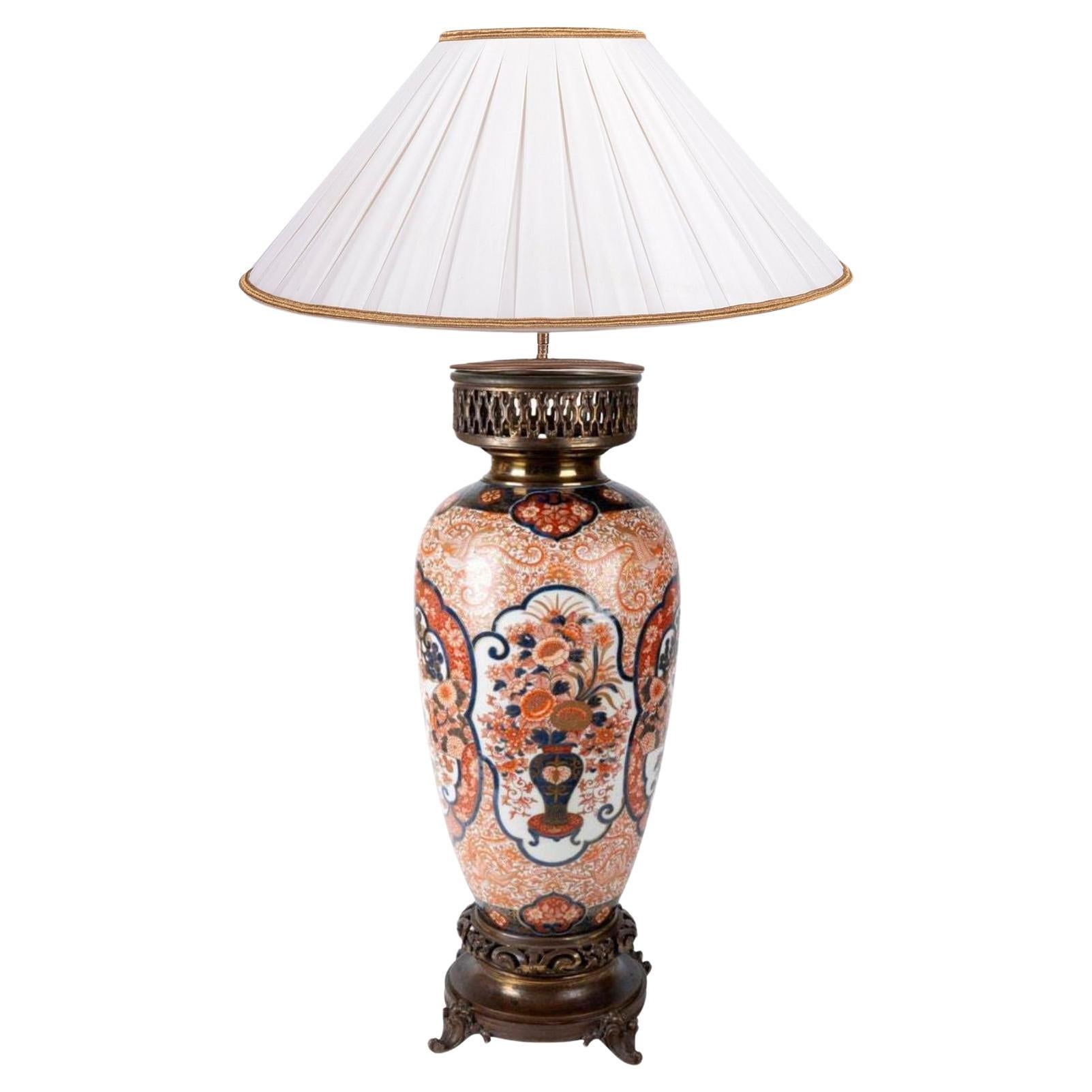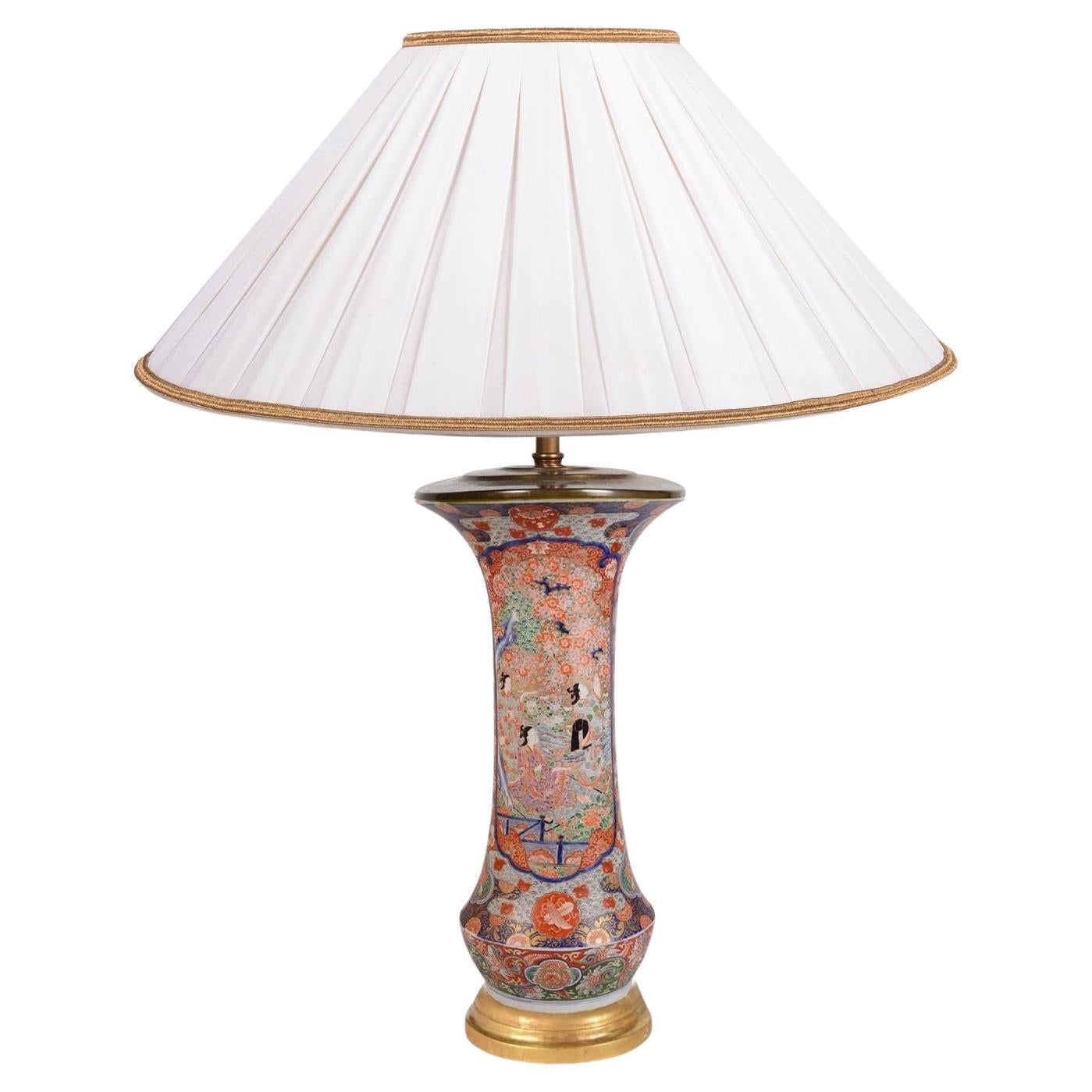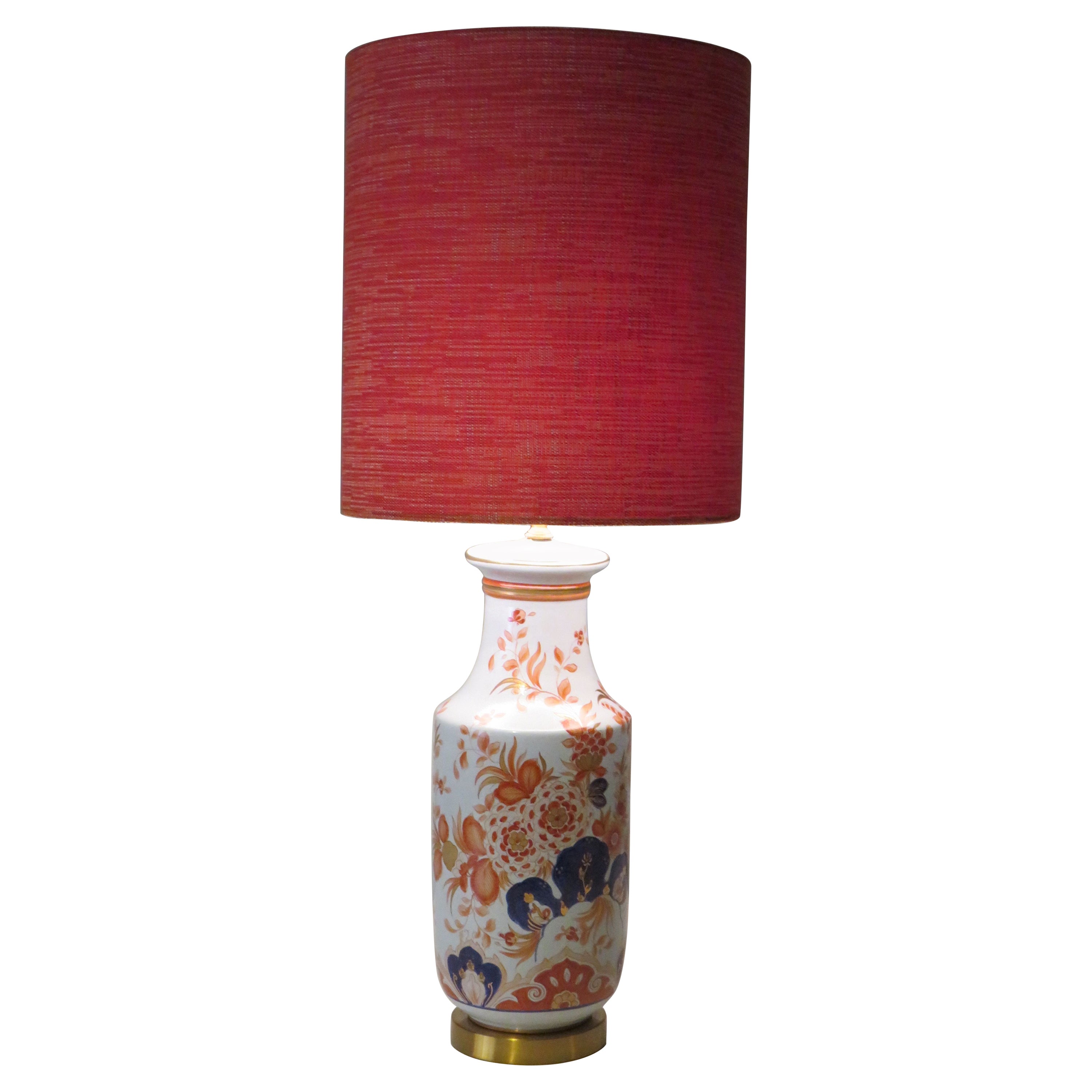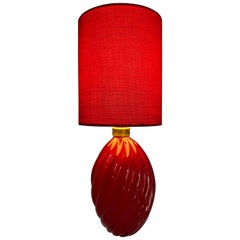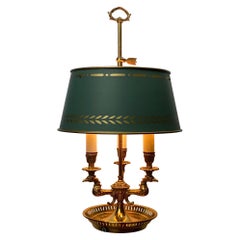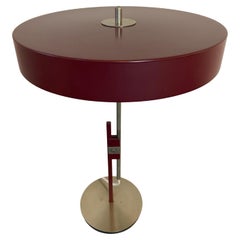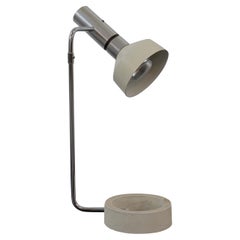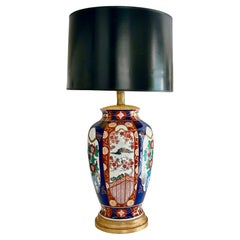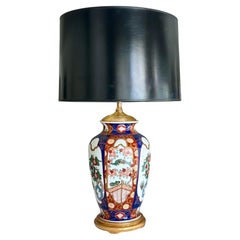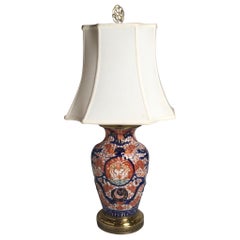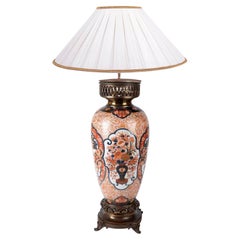Items Similar to Antique Impressive Imari Vase Porcelain Big Tablelamp 19 Century Japan Meiji
Want more images or videos?
Request additional images or videos from the seller
1 of 21
Antique Impressive Imari Vase Porcelain Big Tablelamp 19 Century Japan Meiji
$5,178.60
£3,849.11
€4,350
CA$7,150.22
A$7,929.06
CHF 4,166.13
MX$96,879.65
NOK 52,124.01
SEK 48,927.29
DKK 33,123.07
About the Item
This really impressive and extraordinary very big Imari Tablelamp was manufactured in Japan in the late 19 Century or maybe earlier.
There a many different carefully detailed designs,patterns and on two sides mythological figurative szenes of Men or Gods in vibrant traditional colouring and graphically outstanding for the Painter of the porcelain of Imari .
Especially the shape of this vase or lamp base is very unusual and rare. Only few examples were seen in the past on the international Art Market.
The Lampshade - mounting - device is adjustable from 100 cm to 122 cm for changing the size or form of the Lampshade .
The Vase only is 57 cm high and the diameter is 35 cm .
- Creator:Imari Porcelain (Workshop/Studio)
- Dimensions:Height: 44.89 in (114 cm)Diameter: 23.63 in (60 cm)
- Power Source:Plug-in
- Lampshade:Included
- Style:Japonisme (Of the Period)
- Materials and Techniques:
- Place of Origin:
- Period:
- Date of Manufacture:circa 1890
- Condition:Rewired: electric components including shade was custom made in the early 1980s. Additions or alterations made to the original: electric components including shade was custom made and done by the traditional German Prediger Lampshop in Hamburg in the early 1980s the vase has a hole under the base so it is possible to change the wiring for mounting the cable to the inside . Wear consistent with age and use. The lamp is wired in european standard and has 2 E27 sockets for regular Edison screw Bulbs. The lamp runs both on 110 ,220 Volt,but we recommend to ask an electrician before using.
- Seller Location:Halle, DE
- Reference Number:1stDibs: LU2998342279072
About the Seller
5.0
Vetted Professional Seller
Every seller passes strict standards for authenticity and reliability
Established in 2003
1stDibs seller since 2017
87 sales on 1stDibs
Typical response time: <1 hour
- ShippingRetrieving quote...Shipping from: Osnabrück, Germany
- Return Policy
Authenticity Guarantee
In the unlikely event there’s an issue with an item’s authenticity, contact us within 1 year for a full refund. DetailsMoney-Back Guarantee
If your item is not as described, is damaged in transit, or does not arrive, contact us within 7 days for a full refund. Details24-Hour Cancellation
You have a 24-hour grace period in which to reconsider your purchase, with no questions asked.Vetted Professional Sellers
Our world-class sellers must adhere to strict standards for service and quality, maintaining the integrity of our listings.Price-Match Guarantee
If you find that a seller listed the same item for a lower price elsewhere, we’ll match it.Trusted Global Delivery
Our best-in-class carrier network provides specialized shipping options worldwide, including custom delivery.More From This Seller
View AllImportant Venini Table Lamp in Red, Form "Diamante", Murano by Paolo Venini
By Carlo Scarpa, Paolo Venini, Venini
Located in Halle, DE
A beautiful and important early 20th century Murano desk lamp in rare red colored "diamante"-form glas by Venini.
The Diamante serie was invented c...
Category
20th Century Italian Art Deco Table Lamps
Materials
Brass
French Empire Gilded Bronze Bouillotte Lamp with 3 Eagle Arms
By Maison Lucien Gau
Located in Halle, DE
A beautiful 20th Century classic French Empire gilded Bronze Bouillotte Lamp with 3 sculptural Eagle Arms .
The Bouillotte Lamp present a classic dark-green painted tole shade with ...
Category
Vintage 1960s French Empire Table Lamps
Materials
Brass, Bronze
Rare Midcentury Desklight Tablelamp Model 6886 President for Kaiser 60s Germany
By Kaiser
Located in Halle, DE
A Rare and beautiful Midcentury Desklight Tablelamp Model 6886 for Kaiser 1960s Germany.
Designed in the early 1960s this very elegant Tablelamp was a kind of evolution of the famou...
Category
Vintage 1960s German Mid-Century Modern Table Lamps
Materials
Steel, Nickel
MINILUX TABLELAMP BY ROSEMARIE & RICO BALTENSWEILER, 60s
By Baltensweiler AG, Rosemarie & Rico Baltensweiler
Located in Halle, DE
Adjustable Tablelamp , Model “Minilux”. Design and execution from the 1960s by Rico & Rosemarie Baltensweiler. E27 bulb socket, EU-plug. Lampfoot made from cast-iron. Lampshade is ma...
Category
Mid-20th Century Swiss Mid-Century Modern Table Lamps
Materials
Aluminum
Rare German Midcentury Table Lamp in Solid Brass by Günter&Florian Schulz 1970s
By Florian Schulz
Located in Halle, DE
An extremely rare and early High Quality Table lamp in solid brass by Florian Schulz .
The lampshade is rotatable to have the best opportunities in changing the light directions.
Des...
Category
Vintage 1970s German Mid-Century Modern Table Lamps
Materials
Brass
Two-Armed Bauhaus Table Lamp 6660 Super by Christian Dell for Kaiser Idell 1930s
By Kaiser Idell, Christian Dell
Located in Halle, DE
This ultra rare and very sought after Two-Armed Bauhaus Table Lamp model: 6660 Super, by Bauhaus Designer Christian Dell for German Manufacturer Kaiser, was produced in the 1930s .
C...
Category
Vintage 1930s German Bauhaus Table Lamps
Materials
Steel, Chrome
You May Also Like
Single Large Japanese Asian Imari Porcelain Table Lamp
Located in Palm Springs, CA
Single Japanese Imari porcelain vase mounted on giltwood base and vase cap. The colors are classic Imari in rich burnt orange and dark blue, accented with shades of green and gold. M...
Category
Vintage 1960s Japanese Table Lamps
Materials
Brass
Single Japanese Asian Imari Porcelain Table Lamp
Located in Palm Springs, CA
Single Japanese Imari porcelain vase mounted on giltwood base with brass vase cap. The colors are classic Imari in rich burnt orange and dark blue, accented with shades of green and ...
Category
Vintage 1960s Japanese Table Lamps
Materials
Brass
Antique Meiji Period Imari Porcelain Lamp
Located in Lambertville, NJ
Classic iron red and cobalt blue Imari Porcelain vase now as a lamp/ The circa 1900 Japanese vase, handprinted in the traditional colors, elec...
Category
Antique Early 1900s Japanese Meiji Table Lamps
Materials
Porcelain
19th Century Japanese Imari Vase or Lamp
Located in Brighton, Sussex
A very good quality 19th century Japanese Imari vase or lamp. Having classical Imari colors of oranges and blues, depicting flowers, motifs, and inset panels of children playing and ...
Category
Antique Late 19th Century Japanese Vases
Materials
Bronze
Large 19th Century Japanese Imari spill vases / lamp
Located in Brighton, Sussex
A very impressive fine quality late 19th Century Japanese Imari spill vase, having bold colouring to the motif patterned boarders, inset painted panels depicting Geisha birds among b...
Category
Antique Late 19th Century Japanese Bottles
Materials
Porcelain
Large Mid century ceramic table lamp with Imari inspired motif.
By Imari Porcelain
Located in Herentals, BE
The lamp base has an attractive Imari-inspired floral pattern and is mounted on a brass base.
The table lamp has a professionally handmade custom lampshade made of coarsely woven vel...
Category
Vintage 1960s French Japonisme Table Lamps
Materials
Brass
More Ways To Browse
Imari Pattern
19th Century Japanese Imari
Imari Vase 19
Chinese Jade Table
Chrome Lucite Shade
Clam Shell Lamp
Conch Shell Lamp
Cone Shaped Table Lamp
Cosmo Lamp
Crane Brass Lamp
Czech Mushroom Lamp
Daisy Table Lamp
Diamond Cut Crystal Lamp
Dickinson Plaster Lamp
Dragonfly Lamp
Elisa Uberti
Emile Galle Lamp
Equestrian Lamp
